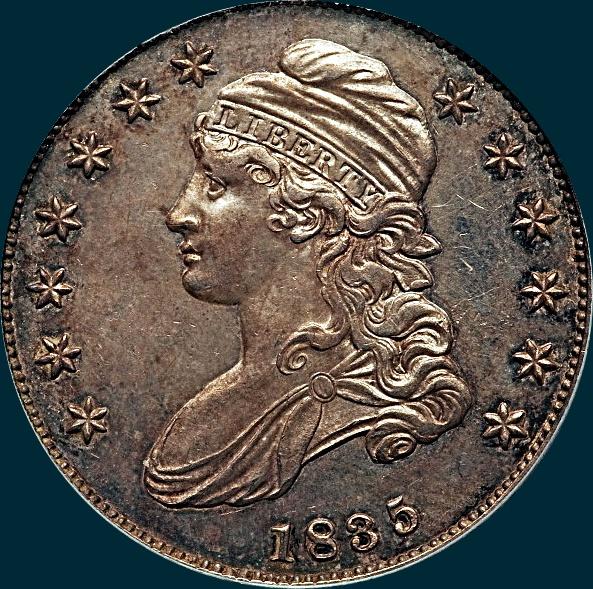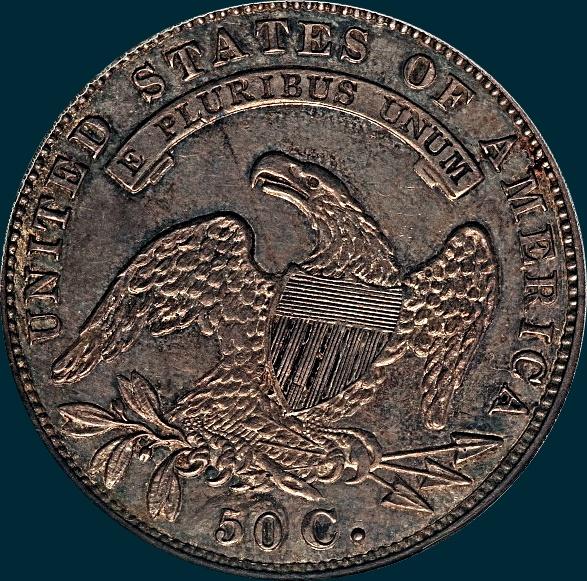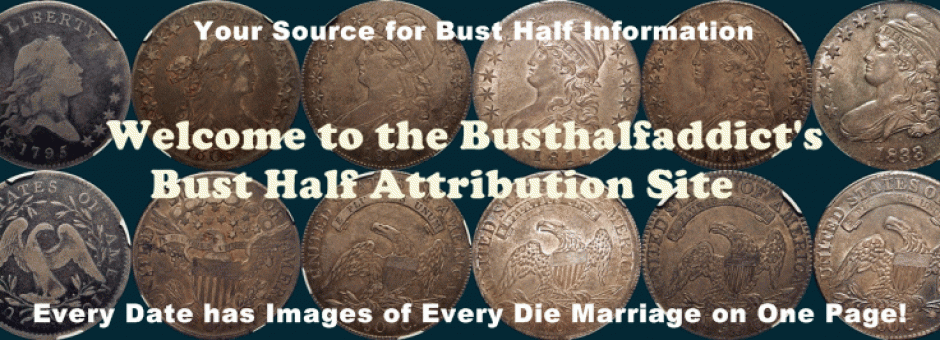1835 O-111 R7+ Crushed Letter Edge Capped Bust Half Dollar
This variety has long been considered a restrike, however, if so, it could not have been struck any later than 1836. The edge is plain and the overall appearance is entirely unlike any other Capped Bust half dollar. There is no doubt this was struck with a closed collar although on a planchet with lettered edge originally intended as a regular circulation strike half dollar. When subjected to the high pressure required for coinage, the closed collar flattened the edge and literally crushed or obliterated the edge, thus today's popular name for these coins. It is interesting to compare this example with the 1832 O-123 Proof. There are many differences that suggest two completely different methods of manufacture.
This has a beaded border on both obverse and reverse. The reverse die is the same as was used for 1836 Overton 106 while the obverse was not used for any other Bust half dollars. The same is true of the 1833 and 1835 Crushed Lettered Edge coins.


The census of this 1834 variety follows. There are more examples of this variety known than the other two.
1. Smithsonian Institution.
2. Eliasberg Speciman (B&M 04/1997)
3. Allenburger/Pittman Speciman (David Akers 05/1998)
4. PCGS PR63 Heritege (FUN-Orlando) Ex Hollinbeck?

